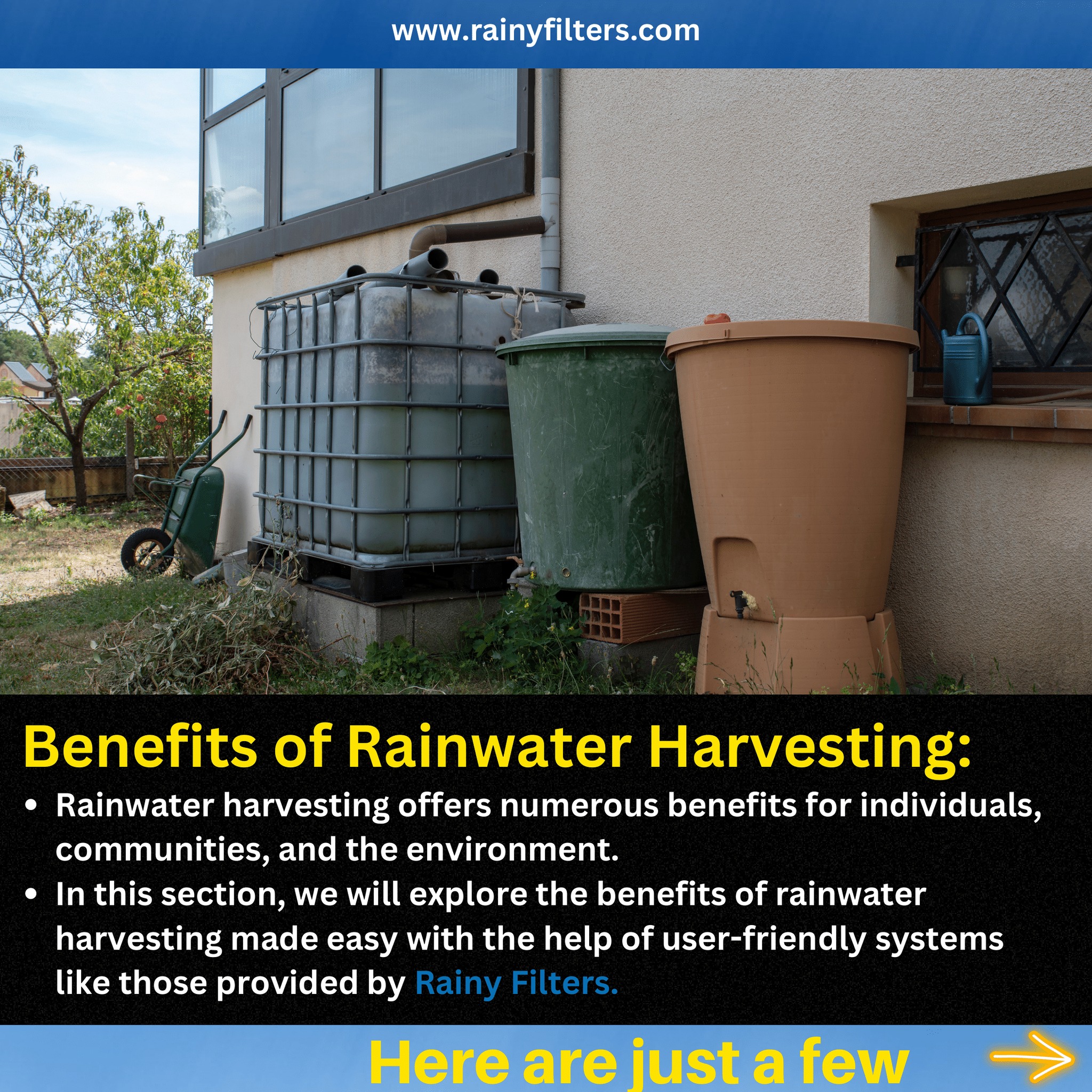Rainwater harvesting is an innovative and sustainable approach to managing one of our planet's most vital resources - water. It allows us to capture and store rainwater for various uses, reducing water wastage and dependence on conventional water sources. In this article, we will explore the different rainwater harvesting techniques that can be implemented in homes, businesses, and communities.

Introduction
Rainwater harvesting is a practice that involves the collection, storage, and utilization of rainwater for various purposes. It is an eco-friendly and sustainable method that conserves water and reduces the strain on conventional water supplies.
The Importance of Rainwater Harvesting
Rainwater harvesting is crucial for several reasons. It conserves water resources, reduces the risk of flooding, and minimizes soil erosion. It also promotes self-sufficiency and decreases dependency on external water sources.
Types of Rainwater Harvesting Systems
Surface Runoff Harvesting
Surface runoff harvesting involves collecting rainwater from open surfaces like roads and pavements. It can be redirected to storage tanks or used for recharging groundwater.
Rooftop Rainwater Harvesting
Rooftop rainwater harvesting is the most common method for residential buildings. Rainwater is collected from the roof and directed to storage tanks.
Groundwater Recharge
This method focuses on replenishing underground aquifers by allowing rainwater to percolate into the ground. It helps in maintaining groundwater levels.
Components of a Rainwater Harvesting System
Catchment Area
The catchment area is the surface from which rainwater is collected. It can be rooftops, paved areas, or any other surface suitable for harvesting.
Conveyance System
This system includes gutters, downspouts, and pipes that transport rainwater from the catchment area to storage tanks.
Storage Tanks
Rainwater is stored in tanks, which can be above or below ground. The tanks should be designed to prevent contamination.
Filtration System
A filtration system ensures that the collected rainwater is free from debris and contaminants before it is stored or used.
Benefits of Rainwater Harvesting
Rainwater harvesting offers considerable advantages, including reduced water bills, lower demand on public water supplies, and the availability of water during droughts.
Installation and Maintenance
Legal Aspects and Regulations
Before installing a rainwater harvesting system, it's important to be aware of all local regulations and obtain any necessary permits.
Maintenance Practices
Regular maintenance is essential to keep the system in good working condition. This includes tank cleaning, gutter maintenance, and ensuring the filtration system is functioning correctly.
Applications of Harvested Rainwater
Irrigation
Harvested rainwater is ideal for irrigation, reducing the demand on potable water for gardening and agriculture.
Domestic Use
Rainwater can be treated for domestic use, including flushing toilets, laundry, and even drinking, after proper filtration and treatment.
Industrial Use
Many industries can benefit from using harvested rainwater for various processes, thereby reducing their environmental footprint.
Case Studies
Residential Rainwater Harvesting
An example of a family successfully implementing a rainwater harvesting system for their home, showcasing the benefits and cost savings.
Commercial Rainwater Harvesting
A case study of a business that has integrated rainwater harvesting into its operations, highlighting the environmental and economic advantages.
Challenges and Solutions
Water Quality Concerns
Addressing concerns about the quality of harvested rainwater through proper filtration and treatment methods.
Initial Setup Costs
Exploring ways to overcome the initial expenses of setting up a rainwater harvesting system.
Future Prospects
The future of rainwater harvesting looks promising as more people recognize its benefits and governments implement policies to encourage its adoption.
Final Thought
Rainwater harvesting is a sustainable and eco-friendly approach to water management that offers a wide range of benefits. By implementing the right system and following maintenance practices, individuals and businesses can contribute to water conservation and self-sufficiency.
Frequently Asked Questions (FAQs)
Is rainwater safe to drink after harvesting?
Rainwater can be safe to drink after proper filtration and treatment.
How can I check local regulations for rainwater harvesting?
Contact your local government or environmental agencies for information on regulations.
What is the typical cost of setting up a residential rainwater harvesting system?
Costs can vary but usually involve expenses for storage tanks, filtration, and installation.
Can rainwater harvesting be used for commercial or industrial purposes?
Yes, many industries use harvested rainwater for various processes.
What are the long-term benefits of rainwater harvesting for the environment?
Rainwater harvesting reduces pressure on natural water sources and helps in conserving water, which is crucial for our ecosystem.

No comments yet